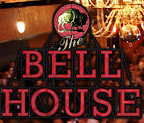 Surrounded by the Coral Sea, the Louisiade Archipelago is a volcanic island chain stretching away from the southeastern extremity of Papua New Guinea’s mainland. These tropical islands are home to rare plants and animals found nowhere else in the world.
Surrounded by the Coral Sea, the Louisiade Archipelago is a volcanic island chain stretching away from the southeastern extremity of Papua New Guinea’s mainland. These tropical islands are home to rare plants and animals found nowhere else in the world.Earlier this year, Dr. Susan Pell led a five-person botanical expedition to the islands’ remote mountains, rain forests, and wet savannahs. The team’s goal? To locate rare and endemic plants and identify endangered ecosystems.
A molecular plant scientist at the Brooklyn Botanic Garden and blogger (who sometimes sends posts via satellite phone), Dr. Pell chronicles her team’s search as they boat from island to island; hike across swollen rivers teeming with freshwater crocodiles; and encounter creatures such as giant spiders, walking “stick” insects the size of small branches, boa constrictors, and flying foxes.
So grab your boots and backpack . . . And don’t miss this hot and steamy, flower-powered adventure!
Before & After
-- Groove to tunes inspired by pistils and stamens
-- Try our cocktail cooler, the Tropitini! It’ll knock you from Cancer to Capricorn . . .
-- Stick around for the floristic Q&A
The “Secret Science Club” meets Tuesday, August 11 at 8 pm @ the Bell House, 149 7th St. (between 2nd and 3rd avenues) in Gowanus, Brooklyn, p: 718.643.6510
Subway: F to 4th Ave; R to 9th St; F or G to Smith/9th
FREE! Just bring your smart self.
FREE! Just bring your smart self.
Doors open at 7:30 PM. 21 and over.






